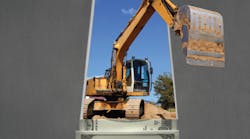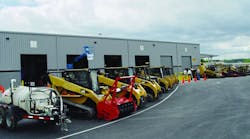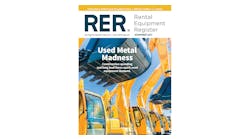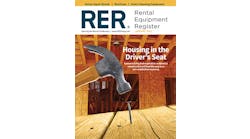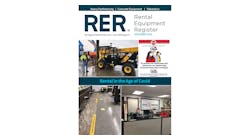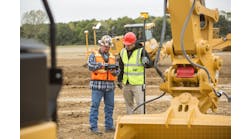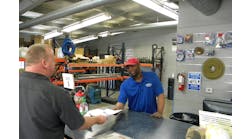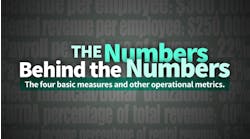In my practice at The Stansberry Firm, I get calls on a daily basis requesting we evaluate rental businesses. Each rental business has its own unique characteristics: size, geography, customer base, product mix, facilities, number of locations, and other factors. Over the past 25 years or so that I’ve been in the industry, more and more rental businesses are falling within several broad categories, each with its own parameters in respect to its financial and operational performance metrics. When evaluating a rental business, it is important to understand these characteristics and what uniquely identifies the business.
Most of the rental businesses I deal with typically fall within the following five categories: general tool rental, construction equipment rental, aerial equipment rental, specialty equipment rental and full-line equipment rental. While certainly there are other types of rental businesses successfully operating around the country, these five profiles cover the majority of my practice and RER’s readership.
Managing Identity in Growth Mode
I often see rental business owners try to “cross-over” and cover more than one of these categories in an attempt to grow their business. Sometimes these diversifications work well, sometimes they achieve marginal success and sometimes these attempts are abandoned. First and foremost, I strongly believe a rental store owner or manager needs to recognize which of these categories most resembles their current business and fully understand the characteristics of other rental business models before attempting to diversify.
Following, I will define and give some “composite” overview data regarding fleet level, financial utilization, payroll and EBITDA performance measures for each of the five categories. Keep in mind that many rental businesses within these broad categories may perform better or worse than the composite data presented here; many may have a more diverse operating profile and some business may not fit cleanly into any one of these business models.
For reference purposes, below is a table with some of the key composite metrics of the different types of rental companies:
EQUIPMENT RENTAL
EQUIPMENT RENTAL
General Tool Rental
General tool rental is the most prevalent rental model out there today, with literally thousands of rental stores in cities and towns both large and small.
General Characteristics
Product Line: Consists of anything from lawn and garden equipment, power tools, pumps, generators, air compressors and air tools with the larger end of equipment usually skid-steer loaders or a towable boomlift. Some companies will even offer party rental equipment. The vast majority of line items within the inventory have an individual original cost of less than $5,000.
Customer Base: Very broad, consisting of homeowners, landscapers and mostly smaller “trade” type contractors. Most customers are “walk-in,” with little delivery.
Rental Contracts: Majority of rentals are cash or credit cards, with very little account billing. Most rentals are daily, some weekly and very few monthly.
Revenues: Most general rental tool stores have annual revenues in the $750,000 to $1 million range.
Sales Force: Many general tool rental businesses do not have an outside sales presence.
Pros:
- Financial utilization (annual rental revenue divided by original fleet cost) is the highest of any of the five categories, usually 80 percent or better.
- EBITDA (Net Income + Interest + Income Taxes + Depreciation + Amortization) as a percentage of rental fleet investment at 27 percent is also on the high end.
- The general tool model has also proven to be resilient to economic slowdowns and with mostly cash and credit card business, very little bad debt.
Cons:
- Most general rental centers tend to have limited upside to revenues with the highest volume stores often peaking at $1.5 million and many struggling to get to $750,000. We have found that most rental stores doing less than $750,000 have marginal cash flow.
- Growth above $1.5 million in revenue requires significant further investment in fleet, delivery vehicles and often the size and layout of existing facilities won’t accommodate growth.
- Multiple locations can be added but sharing of fleet items with an original cost of under $5,000 is often cost prohibitive.
- Payroll expense in this model is high because of a higher number of transactions and often the rental center is open long hours and weekends to accommodate customer base. Higher payroll also leads to lower EBITDA margins.
- For business owners that want to sell, this particular model attracts the fewest number of acquirers as this model is not attractive to large national rental companies or financial type buyers.
Construction Equipment Rental
The construction equipment rental model has historically been a strong business model, continuously attracting financial investors and, successfully practiced by both national, strategic competitors and strong, independent companies.
General Characteristics
Product Line: Consists of a full line of small to mid-size dirt equipment such as skid steer loaders, full size backhoes, box blade loaders and mini-excavators. Aerial equipment includes boom lifts, scissor lifts and reach forklifts. Other equipment offerings include air compressors, pumps, generators, welders and light towers. The bulk of the fleet carries individual unit costs ranging from $25,000-$75,000.
Customer Base: Heavily construction oriented with some industrial; most customers are billed via monthly accounts with very little cash and credit cards.
Rental Contracts: Most rentals are delivered with very little walk-in; many companies choose to be in industrial parks or off heavily travelled roads to reduce real estate costs. Most rentals are monthly, with fewer weekly and very little daily.
Revenues: Typical construction equipment rental locations have between $2 million and $4 million of annual revenue.
Sales Force: A strong outside sales presence necessary.
Pros:
- EBITDA margins can be strong, often 35 percent or better and usually return more than 20 percent of rental fleet investment annually.
- Payroll is one of the lowest of the five models, often 20 percent or less of total revenues.
- There has been strong growth in this sector in recent years with overall growth around 10 percent with many companies achieving 15 percent or more growth.
- Multiple locations can improve fleet utilization as sharing of equipment is feasible.
- For business owners that want to sell, this profile attracts the largest number of strategic and financial buyers.
Cons:
- For an independent rental company, this model puts you squarely in competition with the larger national and regional rental companies.
- Fleet and rental rate management require constant management attention.
- Vulnerable to peaks and valleys of overall economic climate.
Aerial Equipment Rental
Most every major market has at least one aerial equipment specialist. Many of the employees of these aerial specialists, including management, have spent their entire career focusing aerial and have extensive knowledge of maintenance, safety and equipment applications. Rental penetration (amount of equipment rented by end user vs. amount of equipment owned by end user) has gotten a lot of press in recent years but specifically speaking, aerial equipment units such as booms, scissor lifts and reach forklifts are widely regarded as the type of equipment with the highest rental penetration, at more than 80 percent for the category.
General Characteristics
Product Line: Usually consists almost exclusively of scissor lifts, boom lifts and reach forklifts. The bulk of the fleet carries an original cost of $60,000-$90,000.
Customer Base: Often an equal mix of construction and industrial.
Rental Contracts: Virtually all customers are billed on account. Most rentals are on a monthly basis, often for multiple months. Little to no walk-in business; rentals are delivered to job site or plant.
Revenues: Aerial rental specialists often have revenues in excess of $5 million per location; many have multiple locations within a region.
Sales Force: A strong outside sales presence is necessary.
Pros:
- EBITDA margins are often 40 percent or better in aerial equipment rentals.
- Equipment maintenance expense is usually low as aerial equipment is not ground engaging. Also because aerial equipment is not ground engaging, it can work year-round, reducing the seasonality of the rental business in colder climates.
- Sales of used equipment from the rental fleet usually nets a high percentage of original cost as equipment has longer useful lives.
- Payroll expense is usually low in keeping with lower maintenance costs and longer rental periods for equipment.
- Utilization (both financial and physical) of aerial equipment can be increased by sharing with multiple branch locations.
Cons:
- Though aerial equipment has one of the highest physical utlizations of any class of equipment (percentage of time out on rent), it also has the lowest financial utilization (annual rental revenue divided by original equipment cost) in the industry, typically less than 35 percent.
- Although EBITDA margins on revenue is good, the low financial utilization requires higher annual fleet investment, thus forcing much of the EBITDA generated to be re-invested into the rental fleet.
- Aerial rental companies also have the lowest EBITDA return on fleet investment of any category. Many aerial companies buy used and refurbished equipment to improve financial utilization and returns on rental fleet investment.
- The low EBITDA return on fleet has been a concern for many financial buyers looking to enter into the industry but is of lesser concern to strategic acquirers.
- Aerial equipment is also the most competitive category in the rental industry, with most companies competing head to head with large national companies and other aerial equipment specialists.
- Customers on larger jobs often leverage the fact that a number of pieces of equipment are needed for long rental periods to obtain the lowest rates.
- We have noted many aerial equipment specialists find it difficult to expand into other types of rentals, mainly because of lack of employee knowledge and limited customer crossover.
Specialty Rental
This is a very broad and growing segment of the rental industry, with many strategic national competitors expanding into this niche to diversify their customer base and product offerings. Customer demands are more stringent requiring a high level of specialized customer service and product knowledge.
General Characteristics
Product Line: Specialty rental companies may specialize in a particular product such as generators, pumps, HVAC or trench shoring or, may specialize in a customer base such as oil and gas or an industrial segment, such as chemical or agricultural processing plants.
Customer Base: Even though the product or services offered by these companies may be broad, the common bond between the companies is that the customers look to the specialty rental company to be an “expert” in their field, capable of delivering not just products, but solutions. Often these customers expect 24 hour a day, seven day a week service for deliveries and maintenance. In return, specialty rental companies can expect a premium for their rental products and services. Similar to aerial equipment rentals, employees and managers of specialty rental companies often spend their entire career within their specialty and can provide “consultative” type advice to customers regarding equipment applications. Often, expansion opportunities are driven by customer requests, either through geographic or product line expansion.
Rental Contracts: Most customers are billed on account. Rental periods can vary widely from a generator on location for months at a time, to a spot cooler needed for a few days. A number of rentals in the energy sector are billed on a daily basis, even though they may be on a well site for long periods of time.
Revenues: Specialty rental revenues by location can vary widely depending on product offering and industry segment. We have seen profitable, low-overhead operations of less than $1 million per year as well as large, single location regional facilities generating more than $15 million annually.
Sales Force: A strong outside sales force is necessary as well as knowledgeable well-trained field employees.
Pros:
- Specialty rental equipment usually commands higher rates and return higher financial utilization.
- EBITDA margins are strong and EBITDA return on investment in rental fleet is the highest of any category.
- Competition is generally (though not always) less intense in this category, as usually there are only a handful of specialists covering a geographic area.
- For business owners that want to sell, there has been a steady stream of acquisitions of specialty rental companies by both strategic and financial buyers.
Cons:
- Payroll and demands on employees are usually higher in keeping with 24 hour/7-day-a-week customer demands.
- Employees with specialized knowledge can be difficult to come by and training costs for those new to the segment can be high.
- Business can suffer from extreme peaks and valleys, especially with businesses specializing in oil and gas and disaster response.
- Fleet management is difficult with peak demands overrunning available inventory followed by long periods of rental inventory sitting idle.
Full-Line Equipment Rental Business
In looking back over my career, some of the most successful and profitable rental companies were a “hybrid” operation, offering many of the above rental capabilities, and have usually been multiple-location independent rental companies. Some companies’ locations may have a brisk walk-in business similar to a general tool rental but still have the capabilities and product lines of a construction equipment rental business; some locations may closely resemble the construction equipment model with mostly a delivery business, while some individual locations may have specialty capabilities such as HVAC, pump and power or cater to an oilfield or industrial clientele.
In a way, this diversity resembles what some of the major rental companies such as United Rentals or Sunbelt Rentals have done as they develop their construction, aerial and specialty rental businesses through both cold start and acquisition. The notable exception to the national model is the nationals tend to stay away from the smaller equipment and daily rental business.
General Characteristics
Product Line: The company, as a whole, will offer anything from a pressure washer, air compressors, generators, light towers, skid-steer loaders, full-size backhoes to a full line of aerial equipment up to an 80-foot boom. May have “specialty” type equipment such as HVAC, generators or trench shoring.
Customer Base: Although these companies may rent to home owners and small contractors, the focus is on mid-to-large construction contractors and industrial accounts. Individual locations may differ slightly in product offerings or customer base.
Rental Contracts: While these businesses are open to cash and credit card accounts (mainly daily and weekly rentals), the bulk of revenues are billed on account (monthly rentals). Most equipment delivered to work sites with daily and smaller equipment rentals generated from walk-in, business.
Revenues: A full line, general rental business will have at least some locations in high visibility, high traffic areas with individual location revenue ranging from $2 million to $5 million.
Sales Force: A competent inside and outside sales force is required.
Pros:
- A successful, full-line equipment rental business can have the strongest EBITDA margins in the industry and one of highest return of EBITDA on rental fleet investment.
- Diversification of product offerings can also bring a higher financial utilization than that a construction oriented rental store. Diversification of product offering can offer some insulation to economic downturns.
- Exposure to a broad customer base can lead to further growth opportunities; this model lends itself well for regional expansion.
- This is also a highly desirable model for both strategic and financial buyer.
Cons:
- There are very few, if any negatives, to this model, if successfully executed.
- Achieving this type of diversification can be difficult.
More to Consider
Other factors such as supply and merchandise sales, new equipment sales and shop labor can affect the above metrics, especially if more than 10 percent of total revenues. My recommendation is to always focus on rental, as it always provides the highest margin of any other type of revenue. Other products or service sales should only be provided to the extent it promotes or supports rentals.
The rental industry is currently in a robust growth period that provides a number of opportunities for rental operators. Your rental identity influences how you are able to take advantage of these opportunities.
Stansberry is the president of The Stansberry Firm, LLC and specializes in business sales, fair market business valuations and operational consulting, including positioning businesses to increase their value. More information on the company can be found at www.thestansberryfirm.com. Gary can be reached at (210) 797-7368 or by email at [email protected].

